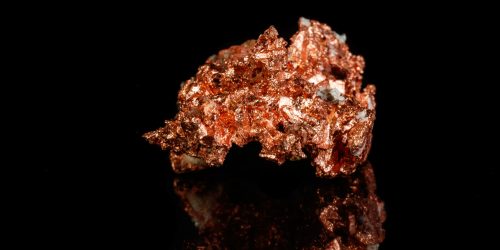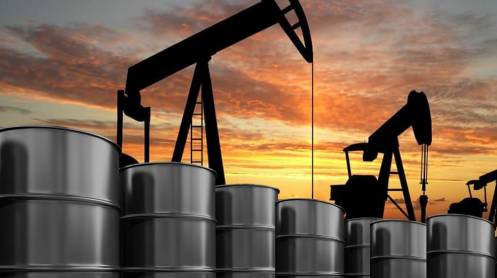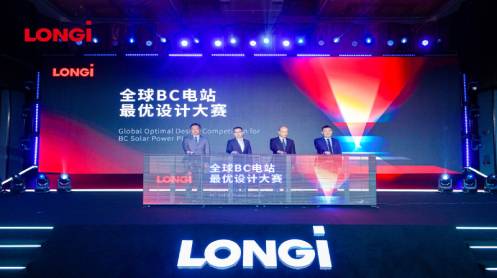Metals. It isn’t often that we — most of us, anyway — think about them. They are like water or packaged foods, things that appear out of a faucet or on a grocery store shelf as if by some magic inception. But there is a scientific beginning to metals. And it’s something we ought to be thinking about, increasingly so. Here’s why: Minerals are critical to the transition to clean, green energy. Copper supplies, for example, need to increase by as much as 6 percent per year to meet the goals laid out in the Paris Climate Agreement. Copper is needed for wind farms, solar panels and electric vehicles. Other metals supplies need to rise, too, in order to get companies and countries to their carbon neutrality goals — phasing out fossil fuels.
Yet global metal production is in decline. Global metal exploration budgets are down 11 percent in aggregate from 2019 to 2020, according to S&P Global Market Intelligence. Investment in copper exploration is down 24 percent.
Less exploration is no way to meet what promises to be the biggest shift in energy supply since the rise of oil at the turn of the last century.
Even the Trump administration, which tried to stop the pivot to alternative energies, realized late in the game that mineral mining was exigent. In December, it determined that the dearth of critical minerals was a national emergency, and urged by executive order a proliferation in mining.
Critical mineral mining needs to increase five times current production rates to meet the expected demand by 2050, the World Bank says in a report.
Metals are needed for more than batteries, windmills and solar power, of course. They are also critical to national defense. Metals are used in high tech devices, aircraft engines and rockets, among other military equipment. (Hence the label of critical minerals.)
As it stands, China is winning the critical mineral race. It produces 63 percent of the world’s rare earth elements and 45 percent of molybdenum — a hard metal resistant to heat that is used widely, from light bulb filaments to body armor. And China has ties to mining in other countries: more than 70 percent of cobalt is mined in the Democratic Republic of Congo, where China has a majority ownership of these mines. Australia produces 55 percent of world’s lithium, and China is its major importer. South Africa mines 72 percent of world’s platinum output, and China has greatly increased its investments there, too.
Beyond the geopolitical divide, there is economic incentive for the U.S. to fill the mining gap.
Critical mineral mining needs to increase five times current production rates to meet the expected demand by 2050, the World Bank says in a report.
To be sure, mining companies see the opportunity, but environmental, social and governance (ESG) issues and investors are — ironically — getting in the way of the green transition. “How minerals are produced and the carbon emissions created during their production are under more scrutiny as manufacturers face pressure from governments, investors and end consumers for cleaner, more ethical supply chains,” EY says in a report, “Why mineral supply may be an e-mobility roadblock.”
Terrestrial mineral mining produces substantial environmental degradation, from digging up soil, destroying habitats and producing enormous amounts of toxic waste, not to mention the carbon emissions coupled with the loss of carbon storage from excavation. More than half of the world’s lithium resources come from Argentina, Bolivia and Chile, where miners compete with farmers for water resources. Lithium is crucial to EV batteries, and it takes nearly 2 million tons of water for every ton of lithium mined. Millions of tons of lithium are needed for the green energy transition.
Green businesses could find big opportunity in focusing on a clean metals’ solution. Investors too can play a part by embracing and backing cleaner, greener minerals extraction concerns.
More amenable mining, to the ESG community at least, lies with recycling metals. But that also means more carbon emissions from melting, processing and purifying metals.
Collecting ocean nodules — clumps of rock deposits found on the seafloor — is a relatively new idea to replace land-based mineral extraction processes. Ocean nodules contain four minerals deemed most critical to building a global renewable energy infrastructure: nickel; cobalt; manganese; and copper. All of these can be found in nodules in the Clarion Clipperton Zone, a remote part of the Pacific Ocean. There are enough of these nodules there — billions of tons — to service the entire need of the clean energy transition. And deep sea nodule collecting reduces by about 90 percent the amount of carbon emissions produced by terrestrial mining. Still, the International Seabed Authority has issued only 18 licenses to organizations for nodule exploration. That doesn’t mean extraction nor processing, which could take years.
None of this solves the immediate need of increasing metals supplies. Ramping up terrestrial mining may have an inverse climate effect — creating excessive carbon emissions in material production rather than material use. Facilities that reuse metals could be a solution. Although while that may curb some virgin mining, it still will come with a carbon emissions’ price. And deep sea nodules seem the most promising in terms of reducing climate impact while at the same time solving the need for minerals, it’s going to take awhile to bring that source online (unless the Biden administration, or others, fast track development).
Meanwhile, the green energy transition is rearing to go. President Joe Biden signed the Paris Climate Agreement his first day in office. The European Union announced plans to spend more than $1 trillion over the next decade on a clean energy economy. China wants to become carbon neutral by 2060. And electric vehicle are expected to reach some 250 million units by 2030.
All of this activity translates into a huge need for metals, which is a problem in search of a solution. And climate change can’t be fixed until the metals problem is solved.
Green businesses could find big opportunity in focusing on a clean metals’ solution. Investors too can play a part by embracing and backing cleaner, greener minerals extraction concerns.
There is an old saying about the person who got the most rich during the Gold Rush was the one who sold diggers shovels. Metals may be today’s shovel version of that adage.
Editor’s note: You can read an excerpt of Kostigen’s book “Hacking Planet Earth: How Geoengineering Can Help Us Reimagine the Future” here.
This piece has been updated to clarify a detail about electric vehicles. By 2030, about 250 million units are expected to be made, not sold.





